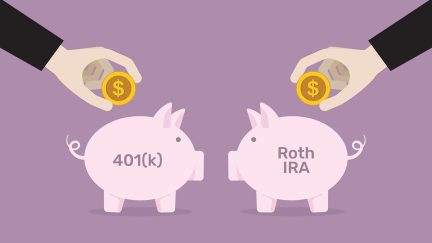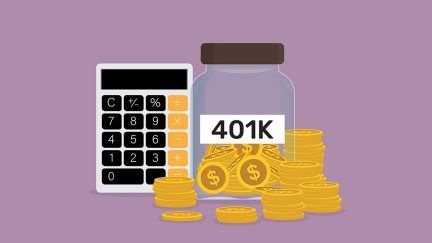For more stories like this, sign up for the PLANADVISERdash daily newsletter.
SECURE 2.0’s Disappointments
SECURE 2.0 has a number of issues with it such as its budget myopia and failure to expand access adequately.

Three months after the passage of the SECURE 2.0 Act of 2022, some observers are looking at the law and considering what SECURE 2.0 left out.
Some items have been widely covered, such as the failure to include a provision permitting collective investment trusts in 403(b) plans. Some technical errors, such as accidentally banning catch-up contributions starting in 2024 (which is still yet to be fixed) have also been widely noted.
But observers say there are some other major omissions from SECURE 2.0 that have flown under the radar.
One of the more underexamined shortcomings of SECURE 2.0 is that it disproportionally helps high earners and those who already have retirement savings, while offering much less to lower earners.
Alicia Munnell, the director at the Center for Retirement Research at Boston College and a professor of management sciences at Boston College’s Carroll School of Management, says of SECURE 2.0 that it has “lots of goodies for high-income people” and “we are giving away a lot to high earners to get some provisions for middle and low [earners].”
For example, SECURE 2.0 expands catch-up contributions for those ages 60 through 63, which would only help those who are already maxed out on their contributions for that year, a group that is disproportionately wealthy. The legislation also increases the required minimum distribution age to 73 and then again to 75 by 2033. Putting off RMDs allows participants to grow their account further, again disproportionately favoring wealthy employees who can afford to wait longer before beginning to take distributions from their retirement accounts.
Siavash Radpour, the associate research director of the Retirement Equity Lab at The New School’s Schwartz Center for Economic Policy Analysis, adds that increasing the RMD age mainly helps those who are saving for other purposes, especially those who are aiming to leave a greater inheritance, rather than needing the money during their retirement.
SECURE 2.0 expands access to lower earners in some ways, such as requiring that part-time workers with two years of service be permitted to join an employer plan and expanding that to include workers with access to 403(b) plans, and enhancing the retirement savings contribution credit, better known as the saver’s credit. However, she says, these reforms are tiny compared to the ones that assist high earners, and the saver’s credit enhancement does not take effect until 2027.
The law also creates two new plan designs for employers that do not offer a retirement plan. One is a deferral-only 401(k) plan and the other is a safe harbor 403(b) plan. Both would require that all employees be enrolled in a plan. The provision is effective for plan years beginning after December 31, 2023. Deferral limits for these plans match the IRA contribution limits.
SECURE 2.0 also allows employers to offer “de minimis” incentives to employees to join a plan, such as by giving them gift cards, says Radpour. Radpour worries, however, that because many employers need low earners in their plans to pass top-heavy testing, this provision may come at the expense of things, like a more competitive and quickly vested employer match.
Tax Revenue Sustainability
The drafters of SECURE 2.0 were very conscious of its budget score and making sure it would be “paid for” within the normal 10-year time frame used by Congress to evaluate the tax price of a bill. Since the window for budget scoring is only 10 years long, SECURE 2.0 was able to account for all its expenses to a large degree by encouraging Roth contributions, as opposed to traditional ones.
Since the income tax on Roth contributions is paid upfront, that tax revenue counts as a “pay for” or revenue raiser for the bill, even though in the long-term, it will cost the government even more money, because the gains on those Roth contributions will be untaxed when distributed.
For example, SECURE 2.0 requires the enhanced catch-up contributions for highly compensated employees to be to a Roth account, which is simply a way to make sure that income is taxed upfront and therefore able to count toward “funding” the bill.
Munnell adds that moving from traditional to Roth is “a hokey thing” and “just a gimmick,” because future tax revenue will be lower as a consequence, even though it is presented today as being financially responsible.
Implementation
Another problem with SECURE 2.0 is that some portions are poorly written, excessively complicated or do not have adequate compliance dates.
The clearest example of this is the requirement that enhanced catch-up contributions for HCEs be made into a Roth account, starting in 2024. This process will be so difficult to implement for many sponsors that many are contemplating suspending catch-ups altogether as a temporary fix, especially public sector employers.
It would be an unfortunate irony if the headache of this provision ended up causing plan sponsors to suspend features like catch-up provisions, given that the point of the legislation was to improve retirement security.
Some of the more anticipated voluntary provisions due to start in 2024, such as the student loan match, will likely not start immediately due to an absence of regulatory guidance.
Not Everyone is Covered
Radpour observes that self-employed workers and independent contractors are wholly left out of SECURE 2.0, as are all state-level auto-IRA programs, since they rely on sign-ups through employers. As the “gig economy” expands, this point will likely become a more salient one.
Part-timers with less than two years of service, caregivers and parents eschewing work to raise children were likewise left out of the legislation.
Longevity, Guaranteed Income, Social Security
SECURE 2.0 also does very little to reform annuities.
The legislation makes it easier to invest in qualified longevity annuity contracts by increasing the maximum amount one can spend from a retirement account to buy one. It also loosens RMD rules for partially annuitized plans. Guaranteed income was simply not a focus of the legislation, to the chagrin of many who saw guaranteed income as an essential element of retirement security.
The Setting Every Community Up for Retirement Enhancement of 2019, aka the original SECURE Act, made it easier to offer lifetime income in a DC plan by protecting employers from liability if they select an annuity provider that meets certain criteria. But observers agree that in-plan annuities remain complicated and adoption has been limited.
If SECURE 2.0 did little to help guaranteed income, then it did nothing for the closest thing to a guaranteed annuity that all workers contribute to and get upon retirement: Social Security.
Social Security has been a hot item since President Joe Biden discussed it in his State of the Union Address on February 7. Several bills have been proposed to reform it, including one that would change the consumer price index used to calculate benefits and another that would remove reductions in benefits paid to some public sector workers.
Radpour says that though SECURE 2.0 did a lot of good, “It is regrettable that we are already looking to SECURE 3.0.”
You Might Also Like:

Recordkeepers Prepare for 2026’s ‘Roth-Only’ Catch-Up

Senate Committee Debates Social Security Funding Proposal
